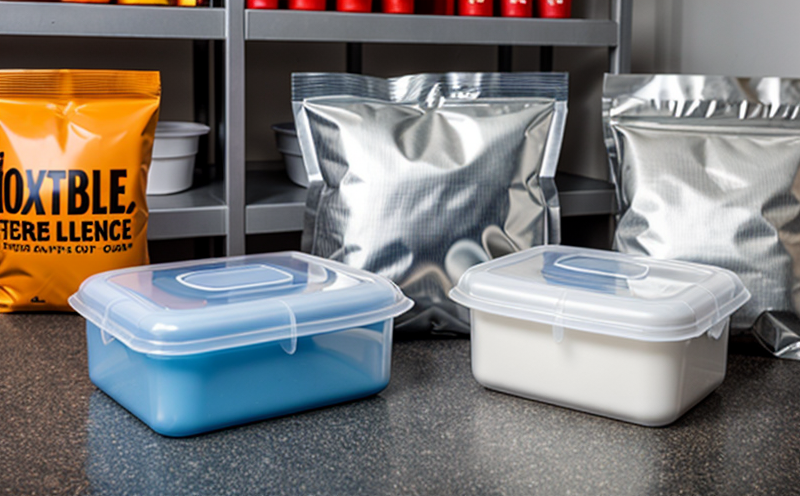ISO 7765-3 Puncture Testing of Laminates
The ISO 7765 series is a comprehensive set of standards that provides detailed guidance on puncture testing for laminates. This service focuses specifically on the third part, ISO 7765-3, which pertains to the puncture test method of flexible packaging materials and structures.
Flexible packaging has seen significant growth in recent years due to its versatility and sustainability benefits. Laminates play a crucial role in this sector by providing multi-functional properties such as moisture resistance, oxygen barrier, and printability. However, the integrity of these laminates can be compromised during transportation or handling, necessitating robust puncture testing.
The ISO 7765-3 standard specifies a method for determining the resistance to puncture of flexible packaging materials and structures using a sharp-pointed needle. This test is essential in ensuring that the laminate maintains its structural integrity under stress conditions, thereby protecting the contents from contamination or degradation.
During the testing process, the sample is clamped between two plates with a predetermined distance. A needle is then pressed into the laminate at a specified speed until it penetrates the material to a certain depth or force threshold. The test results can be used to evaluate the puncture resistance of different materials and structures, aiding in the development of more robust packaging solutions.
The significance of this service extends beyond just compliance with international standards. It plays a pivotal role in ensuring product quality, enhancing customer satisfaction, and maintaining brand reputation. By adhering to ISO 7765-3, manufacturers can demonstrate their commitment to producing high-quality flexible packaging that meets the highest industry standards.
In addition to puncture resistance, this service also offers insights into the mechanical properties of laminates, which are critical for product performance and safety. Understanding these properties enables manufacturers to optimize material selection and design, leading to improved packaging solutions that better meet market demands.
Scope and Methodology
| Test Parameters | Description |
|---|---|
| Sample Preparation | The sample must be cut to a specified size, ensuring it is free from defects or contamination. The edges should be smoothed and any loose materials removed. |
| Test Setup | The sample is clamped between two plates with a predetermined distance. A needle of specific dimensions is positioned at the center of the sample. |
| Puncture Force | The force required to penetrate the laminate is measured and recorded. The test may be repeated multiple times to ensure consistent results. |
| Acceptance Criteria | Description |
|---|---|
| Puncture Depth | The depth of penetration must not exceed a specified limit. If exceeded, the laminate is considered to have failed the test. |
| Puncture Force | A predetermined force threshold defines the pass/fail criteria for the test. If the applied force exceeds this threshold, the sample fails the puncture resistance test. |
The methodology outlined in ISO 7765-3 ensures consistency and accuracy in testing, allowing for reliable evaluation of laminate performance. The use of precise instruments and standardized procedures guarantees that results are comparable across different laboratories and manufacturers.
Environmental and Sustainability Contributions
- Eco-friendly packaging solutions: ISO 7765-3 helps in the development of sustainable packaging materials by ensuring their robustness against environmental factors such as puncture, which can lead to product spoilage.
- Reduced waste: By enhancing the durability and integrity of flexible packaging, this testing service supports efforts towards minimizing waste generation.
- Resource efficiency: The use of ISO 7765-3 facilitates the optimization of material usage, leading to more efficient resource utilization in the production process.
The environmental benefits derived from adhering to these standards contribute significantly to reducing the carbon footprint associated with packaging production and disposal. By implementing robust puncture testing, manufacturers can ensure that their products are not only sustainable but also meet stringent quality requirements.
Competitive Advantage and Market Impact
The ability to conduct ISO 7765-3 puncture testing offers significant competitive advantages in the packaging industry. By ensuring product integrity, manufacturers can enhance customer satisfaction and loyalty, which are crucial factors in today's market.
Compliance with international standards also enhances a company’s reputation as a leader in quality and innovation. This, in turn, opens doors to new business opportunities and fosters trust among consumers and partners.
The results of this testing can be used to inform product development decisions, allowing companies to stay ahead of market trends and meet customer expectations. By continuously improving their packaging solutions, manufacturers can ensure they remain competitive in a rapidly evolving industry.





